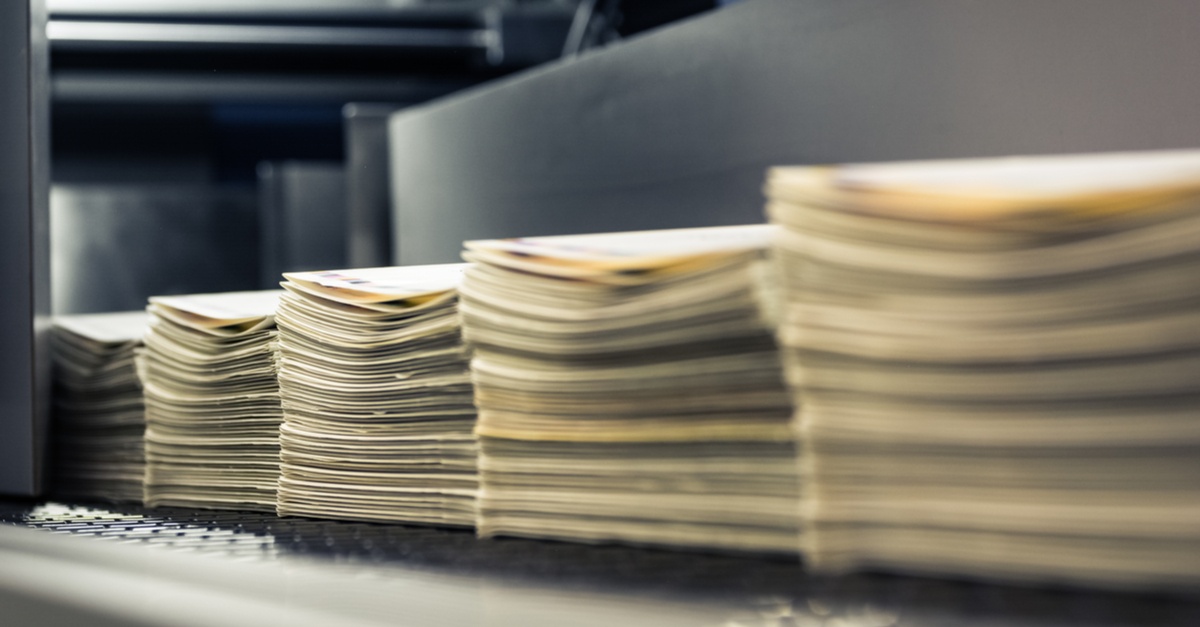You’re working on a new book project. The content, images and cover design are ready to go, but you have one more decision to make: What is the best way to print and bind your book?
There are several options for printing and binding – case, perfect, saddle stitch, comb and spiral – but none of these is one-size-fits-all. Do you want the reader to keep the book forever? Is it important to lay the book flat? There are several questions to answer before you decide. But usually, it comes down to the type of book you need.
Related: What’s in a Bind? 4 Types of Book Binding – Pros and Cons
Workbooks or Reference Books
When you create a workbook, reference book or cookbook, the reader should be able to turn pages easily and lay the book flat. For this type of book, comb, spiral or thermal binding may be the best method. These three similar methods are cost-effective and allow the book to easily lie open on a table.
Comb binding involves threading a “comb” into holes punched into the edge of the book. While the combs are relatively inexpensive and the pages will lie flat, you cannot double the book over. You can use this method with books up to three inches thick.
With spiral binding, a metal or plastic coil is threaded through holes in the edge of the book. It allows more play between pages than comb binding, and you can double the book over. The coils are usually from ¼” to 2” in diameter and can be up to 24” long.
For thermal binding, the book’s spine is heated, gluing the pages to the spine. You can add and remove pages by reheating the spine, and this may provide a more professional look than comb or spiral binding.

Hunter Bliss/Shutterstock.com
Booklets and Catalogs
If you have a shorter book that isn’t meant to last forever, like a catalog, magazine or booklet, you may want to consider saddle stitching. With this method, the binder stitches the pages together using metal staples and then folds the pages. You can use this method with or without a cover.
One advantage here is that the book lies almost flat. It is also cost-effective, especially when you are printing small booklets, and you can usually get a fairly quick turnaround for saddle stitching.
Keep in mind, though, that you will need at least eight pages for this method, and the total number of pages must be a multiple of four. Also, if the booklet will be more than 3/8”, you cannot use saddle stitching.
Related: How to Choose Paper Stock for Your Next Print Job
Books and Technical Manuals
For a professional feel without a hard cover, perfect binding is probably a good choice for you. Use this for books, technical manuals, or thick magazines. With this method, the binder sews the pages together in sections, glues the sections to end-papers, and then glues on a light-weight cover.
This is the type of binding you see with paperback books. It looks professional and is of high quality. It is, however, more expensive than many of the other methods, and the pages don’t lie flat because of the glue on the spine.
Textbooks & High-Quality Novels
If you need a high-quality hardcover book that will last for many years, consider case binding. You may want to use this if you are professionally publishing a textbook, memoir or novel. The method here is the same as with perfect binding, except that a hard casing is glued to the spine.
Case binding is impressive, highly durable and increases the retail price of the book. It is, however, the most expensive binding technique. If you are shipping, keep the weight of the covers in mind.
Be sure to carefully consider the binding method during the design process, as it can affect the margins and page size, among other factors. There are pros and cons to each. Whatever type of book you create, the binding says a lot about the book’s use, quality and content.
Contact our book printing and binding experts at Ironmark to help select the binding that works best for your book and budget. We’d be happy to get your started!




